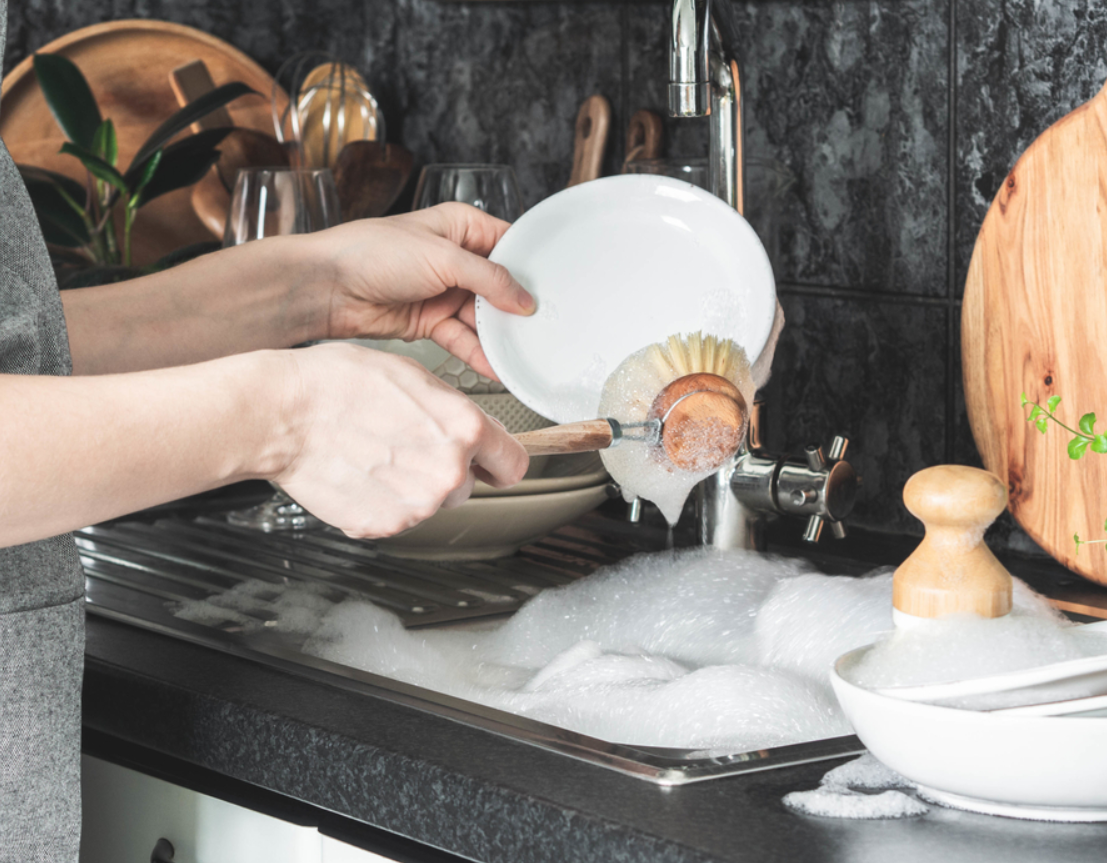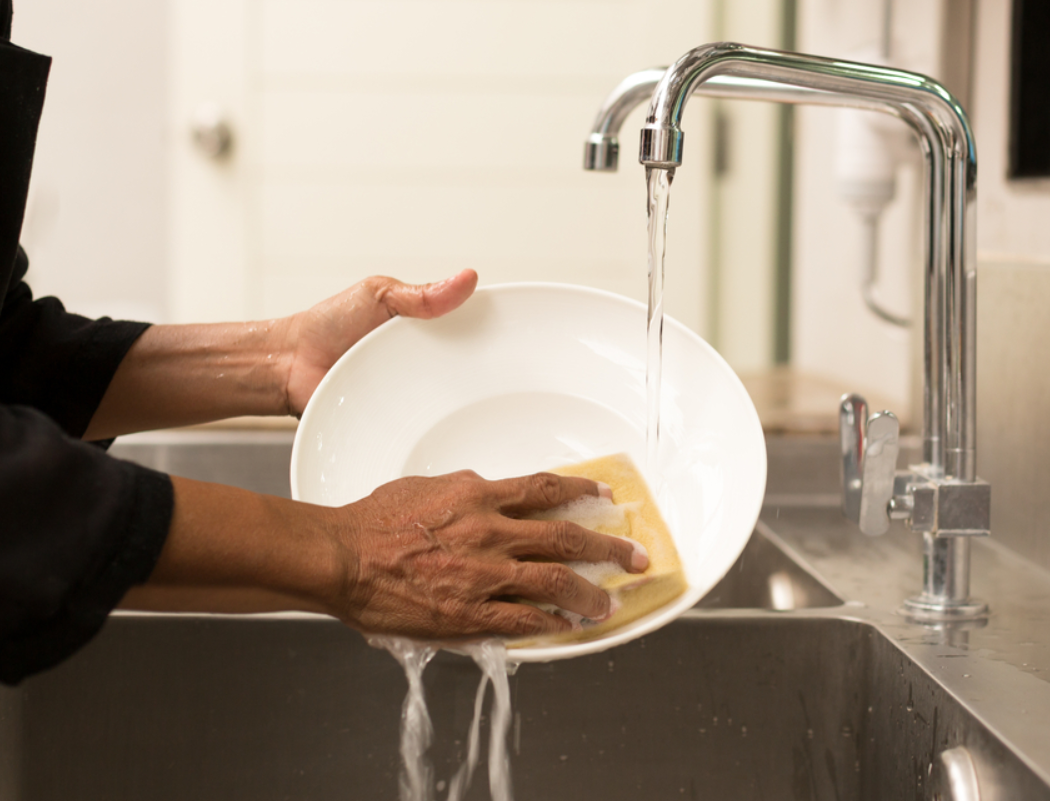Many households struggle with the question of whether using a dishwasher or handwashing dishes is more water-efficient when trying to reduce water usage and live a more sustainable lifestyle. Here, we will look into the water-saving potential of dishwashers, backed by consumer reports and practical insights.

Highlights:
- Dishwashers use less water than handwashing, helping you save water and be eco-friendly.
- Handwashing can be efficient with the basin method, but it still uses more water than dishwashers, especially for bigger loads.
- Dishwashers save water and provide a cleaner and safer environment for your dishes, reducing the chance of bacteria.
- Despite what you might think, using a dishwasher is better for the environment, as shown by comparing water usage in a sink to handwashing.
- Using a dishwasher saves you time and helps conserve water, making it a win-win for efficiency and eco-conscious living.
Does a Dishwasher Save Water?
Yes, dishwashers typically save water compared to handwashing, with modern models using about 4 to 6 gallons for a full load, whereas handwashing can consume around 22 gallons per session.
Let’s explore the numbers and debunk common myths surrounding this daily household chore.
Additional Resources:
Water Consumption: Handwashing vs. Dishwasher
Nearly 70% of households have a dishwasher, but one out of five rarely use them. Growing up in a household where the dishwasher served mainly as storage, where handwashing was the norm.
According to Consumer Reports, modern energy-saving dishwashers typically use about 4 to 6 gallons of water to clean a full load. In contrast, handwashing with the water running can consume around 22 gallons per session. That’s a significant difference in water usage.
This is where the problem with water comes up. Washing dishes by hand can be water-intensive, especially compared to newer, energy-saving dishwashers. Consumer Reports tests reveal that modern dishwashers use approximately 4 to 6 gallons of water to clean a full load.
In contrast, handwashing with running water can consume around 22 gallons. The numbers don’t lie – dishwashers appear to have the upper hand in water efficiency.
Basin Handwashing Technique

You can follow the Basin Method as an optimal handwashing technique for those who still prefer the hands-on approach or don’t own a dishwasher. It’s a simple and easy step, emphasizing the importance of efficiency in minimizing water usage.
Materials Needed
- Dish soap
- Plastic basin or sink
- Dishwashing brush or sponge
- Drying rack
- Towel
Steps
- Scrape Off Leftover Food: Before starting, scrape off any leftover food from the dishes into the trash.
- Fill Basin with Hot Soapy Water: Fill one side of the sink or a plastic basin with hot water and add a few squirts of dish soap.
- Fill the Other Side with Cool Water: Fill the other side with cool water using a two-sided sink. Skip this step if using a plastic basin.
- Wash Dishes Gradually: Start washing dishes, beginning with the least soiled items and working up to heavier soiled pots and pans if necessary.
- Rinse in Clean Water: Rinse each dish in clean water to remove soap residue. If the rinse water becomes too soapy, pour it out and add more clean water.
- Dry in a Drying Rack: Place washed dishes in a drying rack, allowing space for air circulation to avoid spots.
- Optional: Use Rubber Gloves for Protection: Wear rubber gloves to protect your hands, especially when dealing with hot water and potentially harsh dishwashing liquids.
- Additional Tools: Consider using a bottle brush for drinkware and a towel to dry glass items. Sanitize sponges regularly by microwaving them for two minutes.
From scraping off leftover food to utilizing a plastic basin for clean water.
Handwashing Hacks

There are a few essential tools and tips to make handwashing even more efficient. Using a bottle brush for drinkware and incorporating a drying rack for proper aeration are recommended.
- Keep pristine drinkware with a brush – perfect for reaching tricky spots in reusable bottles and straws.
- Opt for a drying rack post-handwash to air-dry dishes efficiently, preventing water spots and speeding up the drying process.
- Zap wet sponges for two minutes in the microwave to keep them bacteria-free – a quick and easy hygiene boost.
- Slip on rubber gloves for a handwashing session without direct contact with soap and water, ensuring comfort and protection.
We warn against the breeding ground for bacteria that wet sponges can become, suggesting a quick sanitization method in the microwave.
Debunking Myths
After a comparative analysis to further emphasize the water-saving benefits of dishwashers, it counters the water usage of a typical sink (30 liters) with the amount required for handwashing a full load of dishes (approximately 15 liters). This comparison demonstrates that dishwashers are a more water-efficient choice, countering the popular belief that handwashing is the greener option.
Conclusion
In the ongoing battle between handwashing and dishwasher usage, the evidence points to dishwashers as the more water-efficient option.
We clarify this common household puzzle, urging families to consider environmental impact and cost savings when deciding how to tackle their post-meal cleanup.
Understanding the numbers, whether you’re a dishwasher user or a hand-washer, may change how you approach this daily chore. Working together to save water could be a small but impactful step towards a more sustainable future.

Hello! I’m Paula Deen, a mother who loves to create memories in the kitchen. As a kitchen enthusiast, I love to do experiment with different kitchenware for daily recipes. This is my blog, where I’ll share my experience, knowledge, and reviews on various kitchenware and appliances.